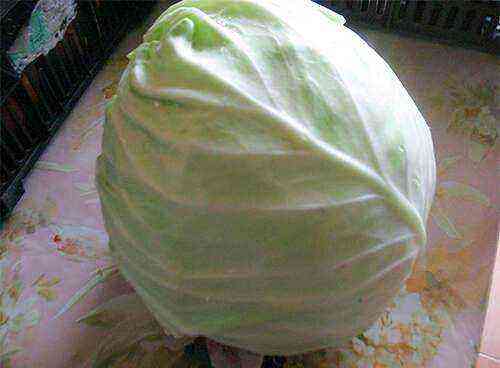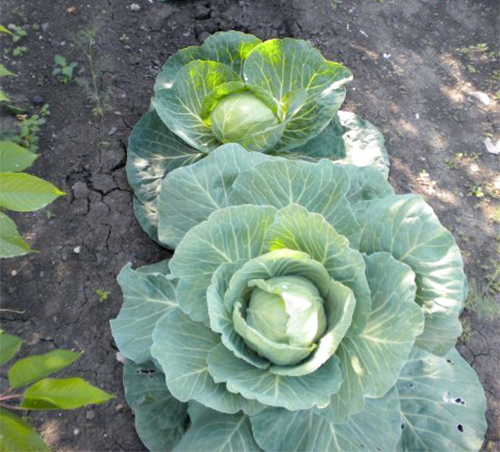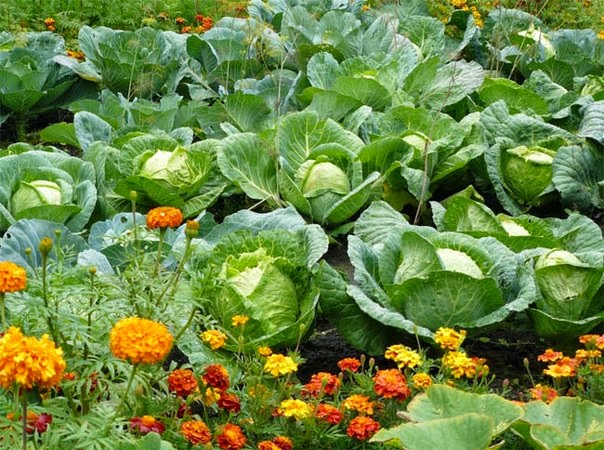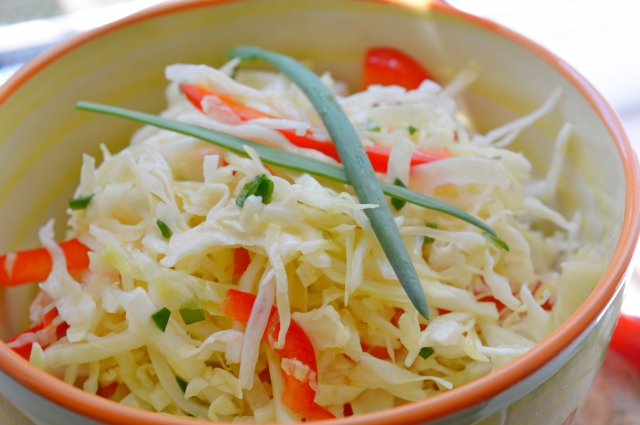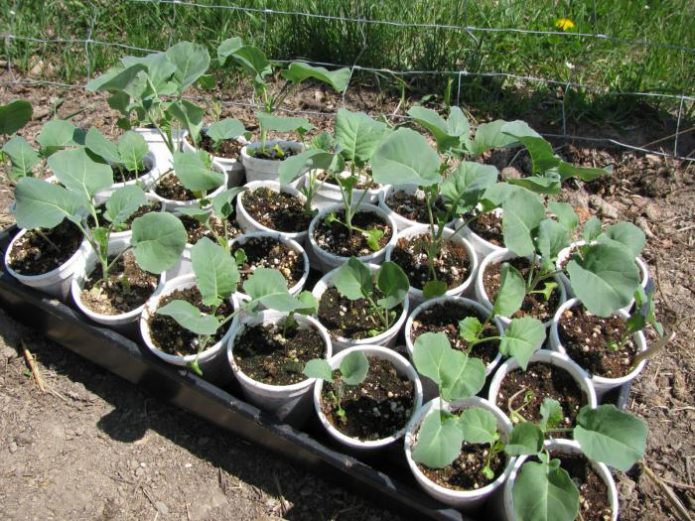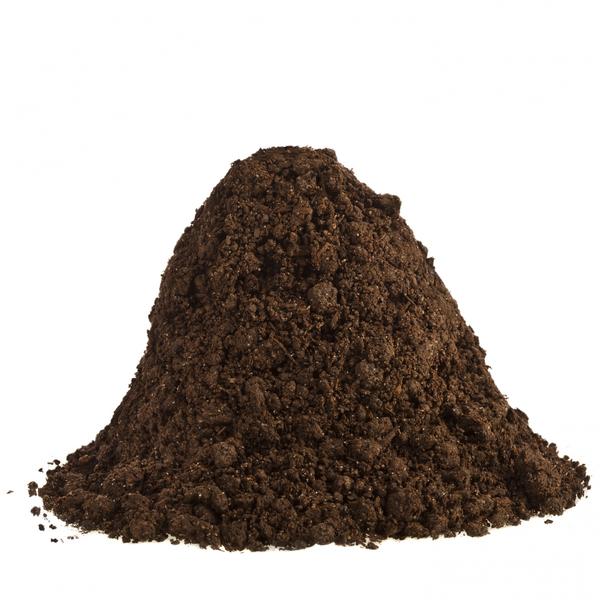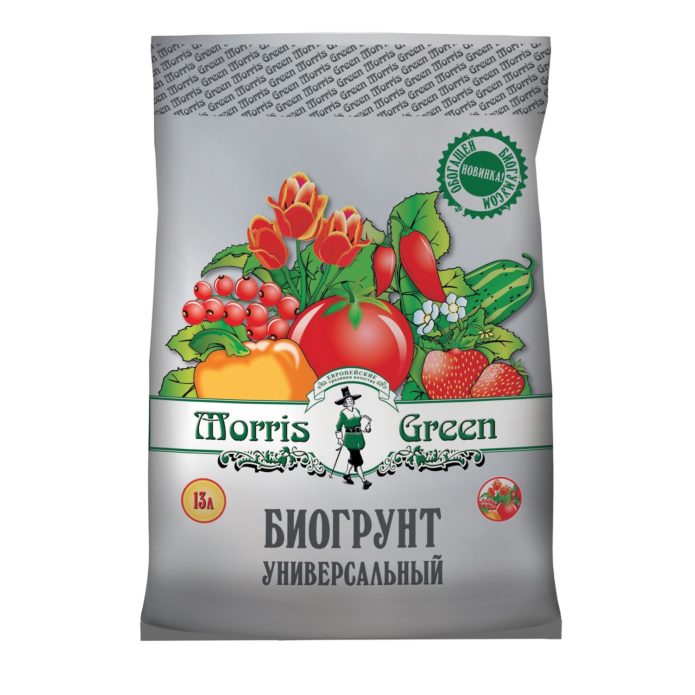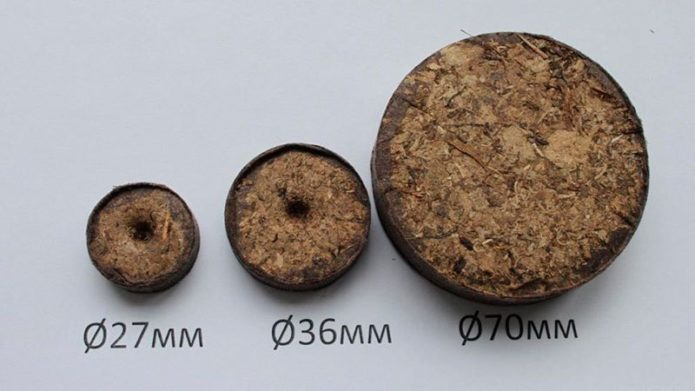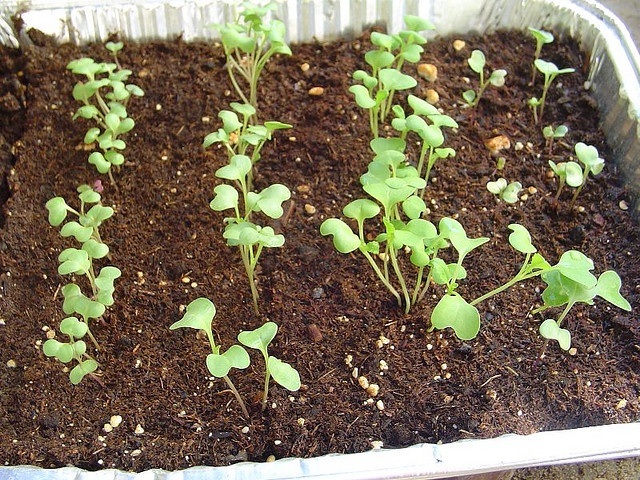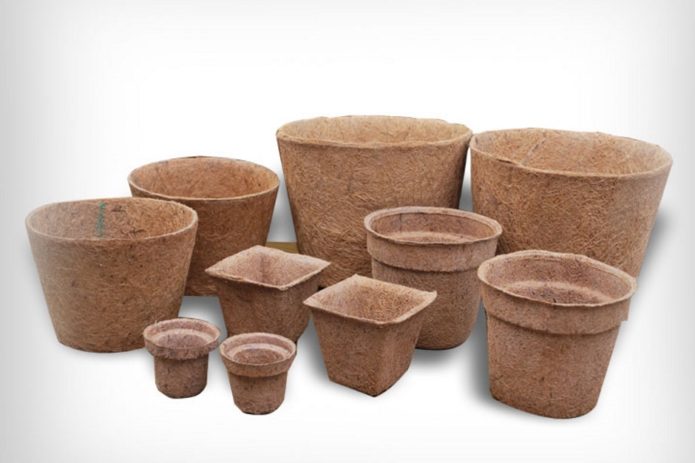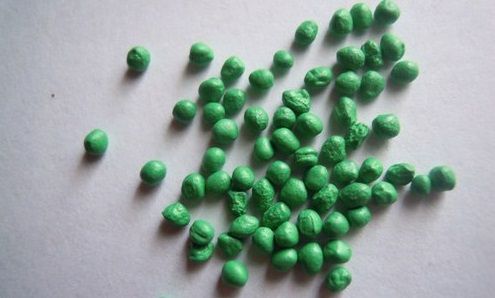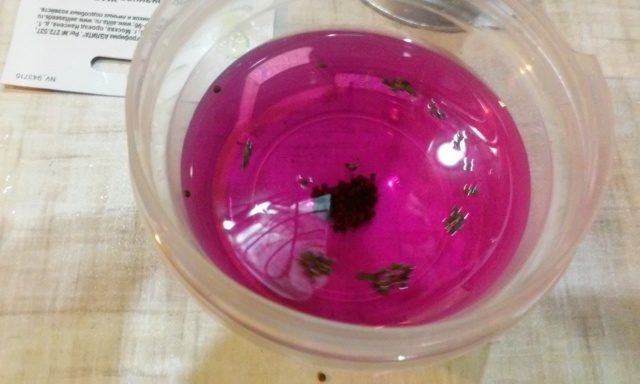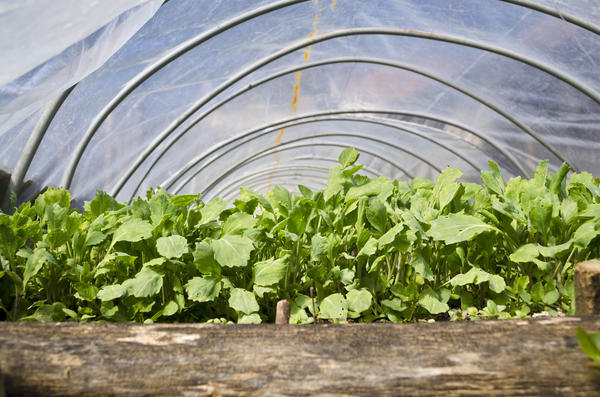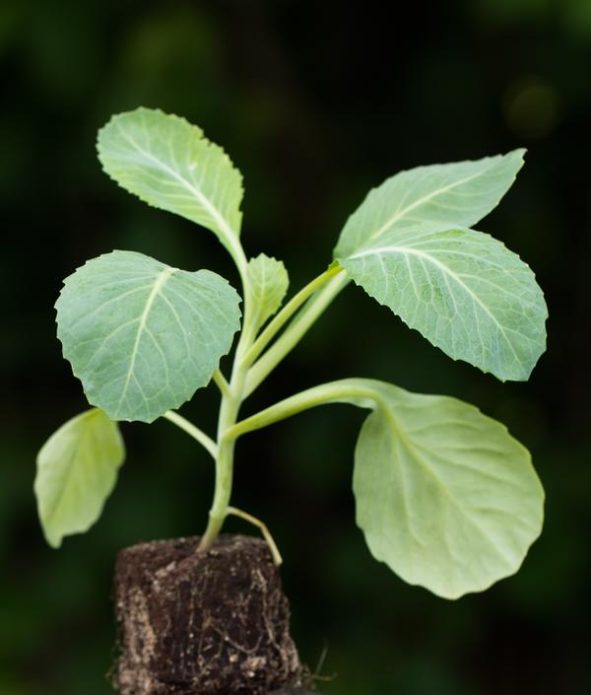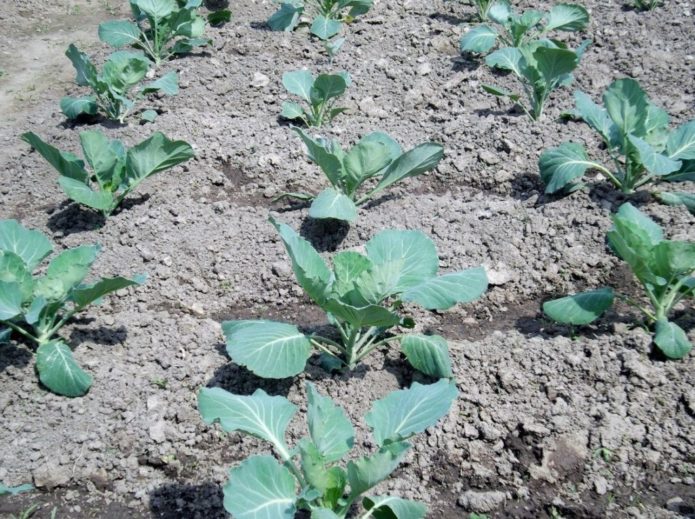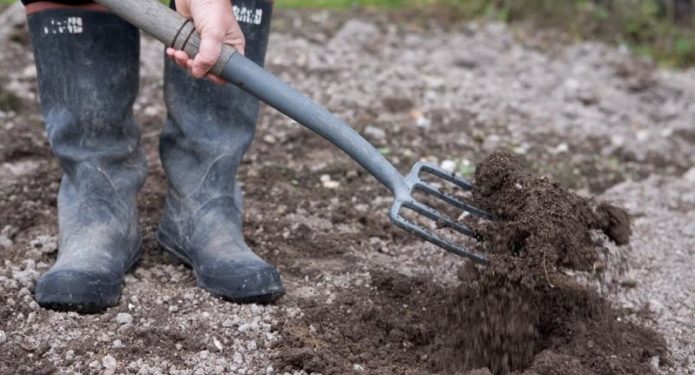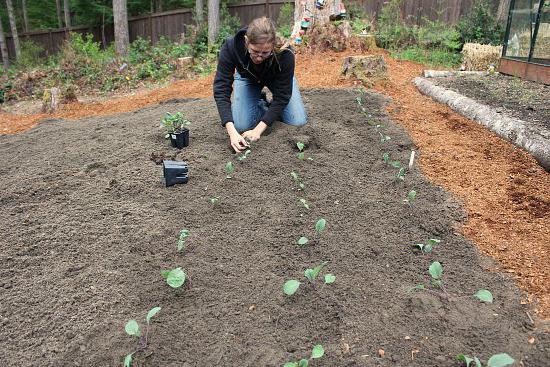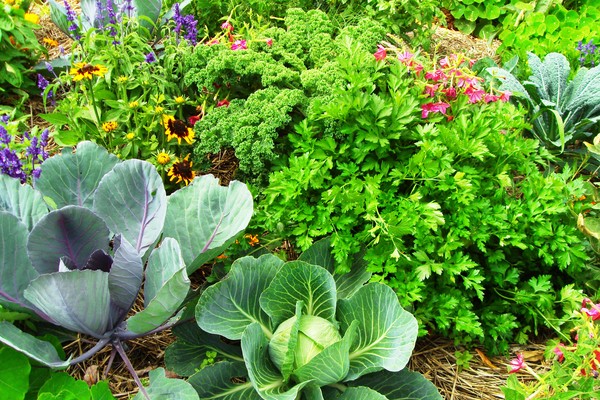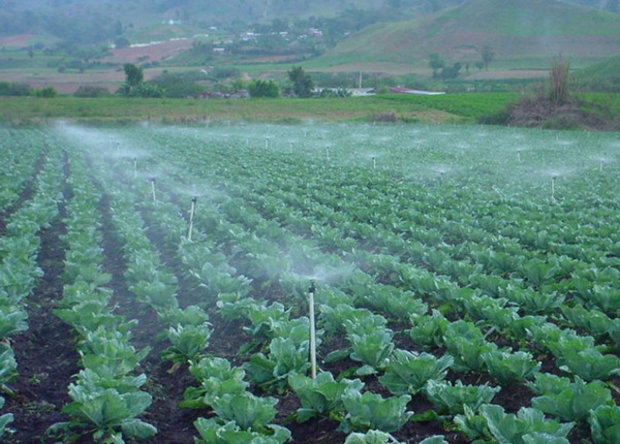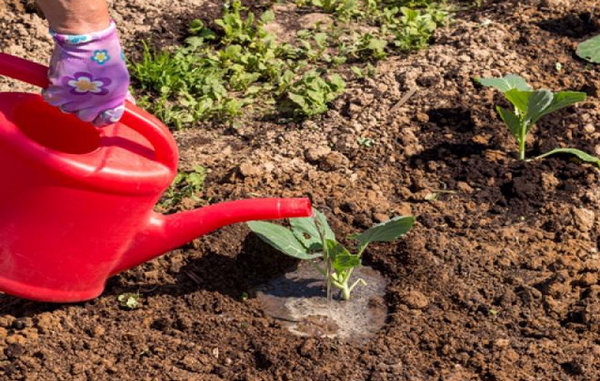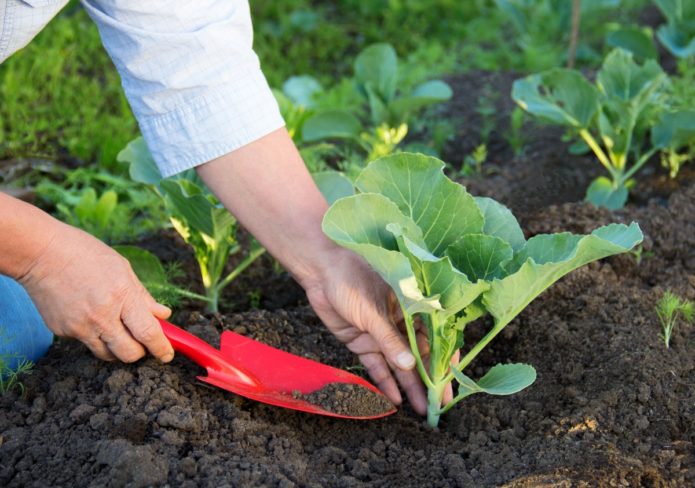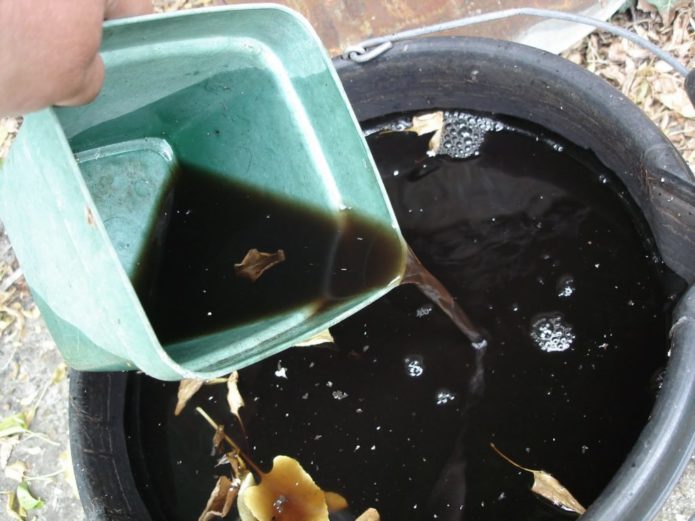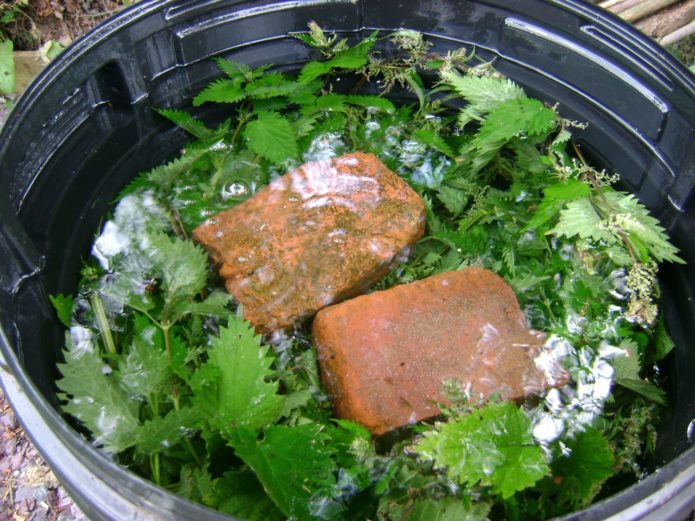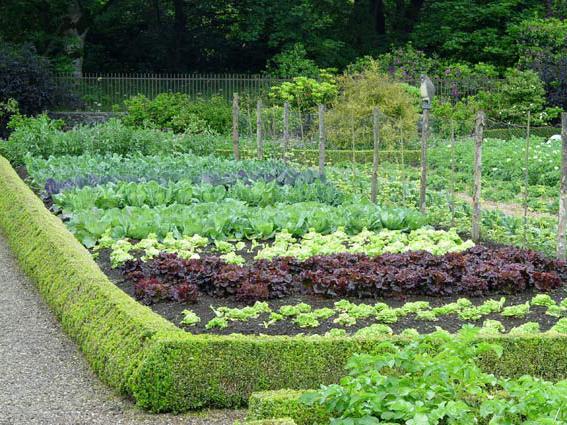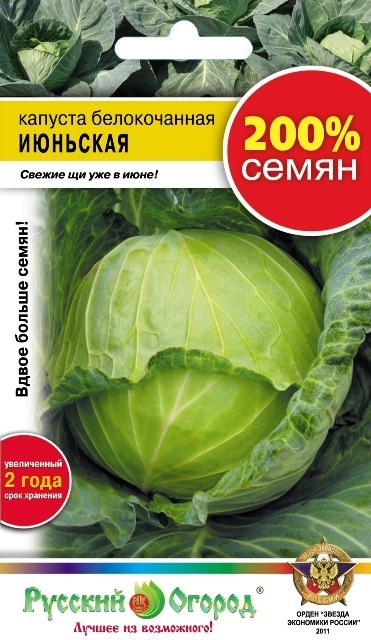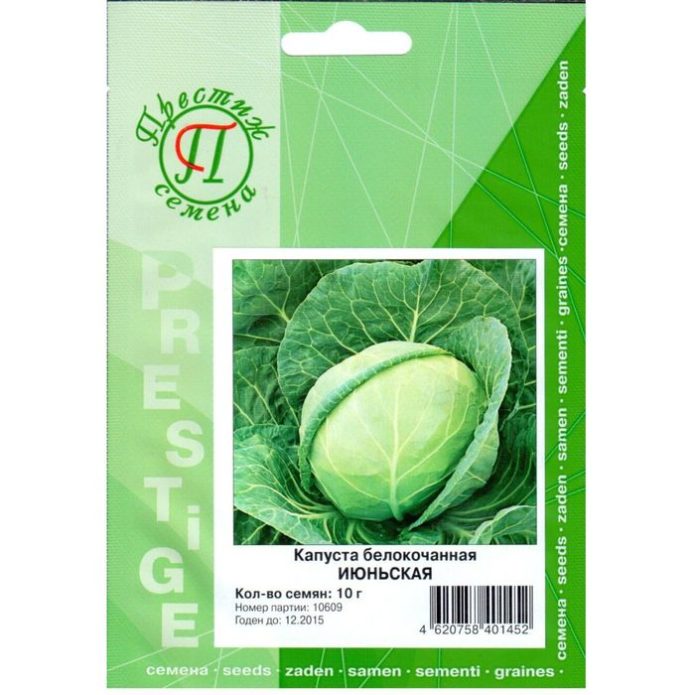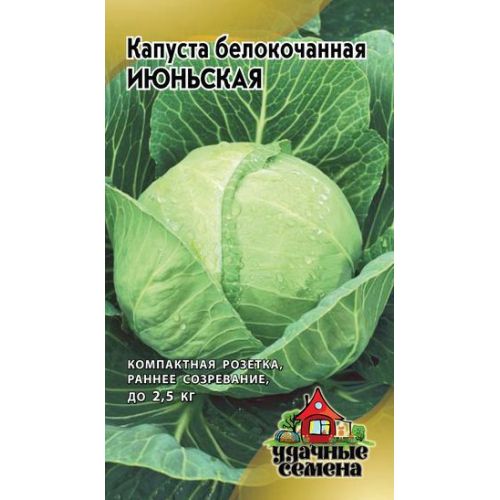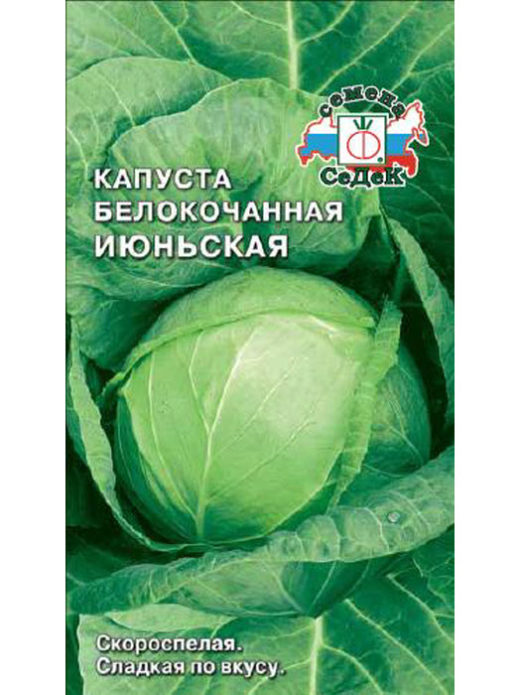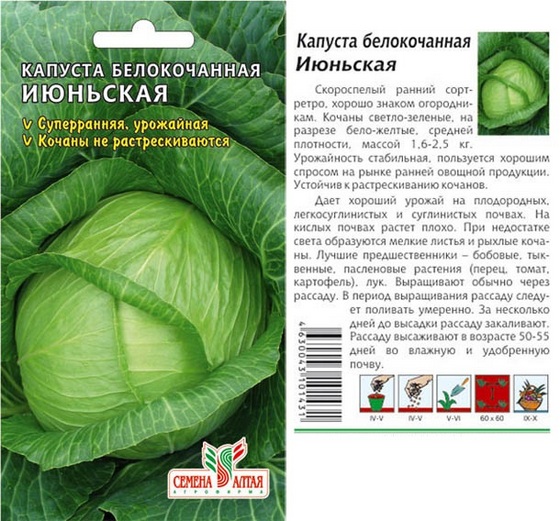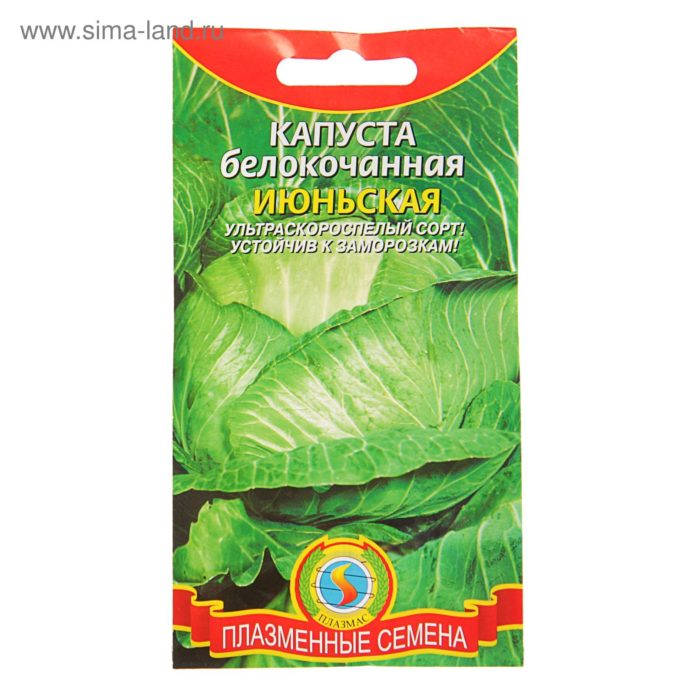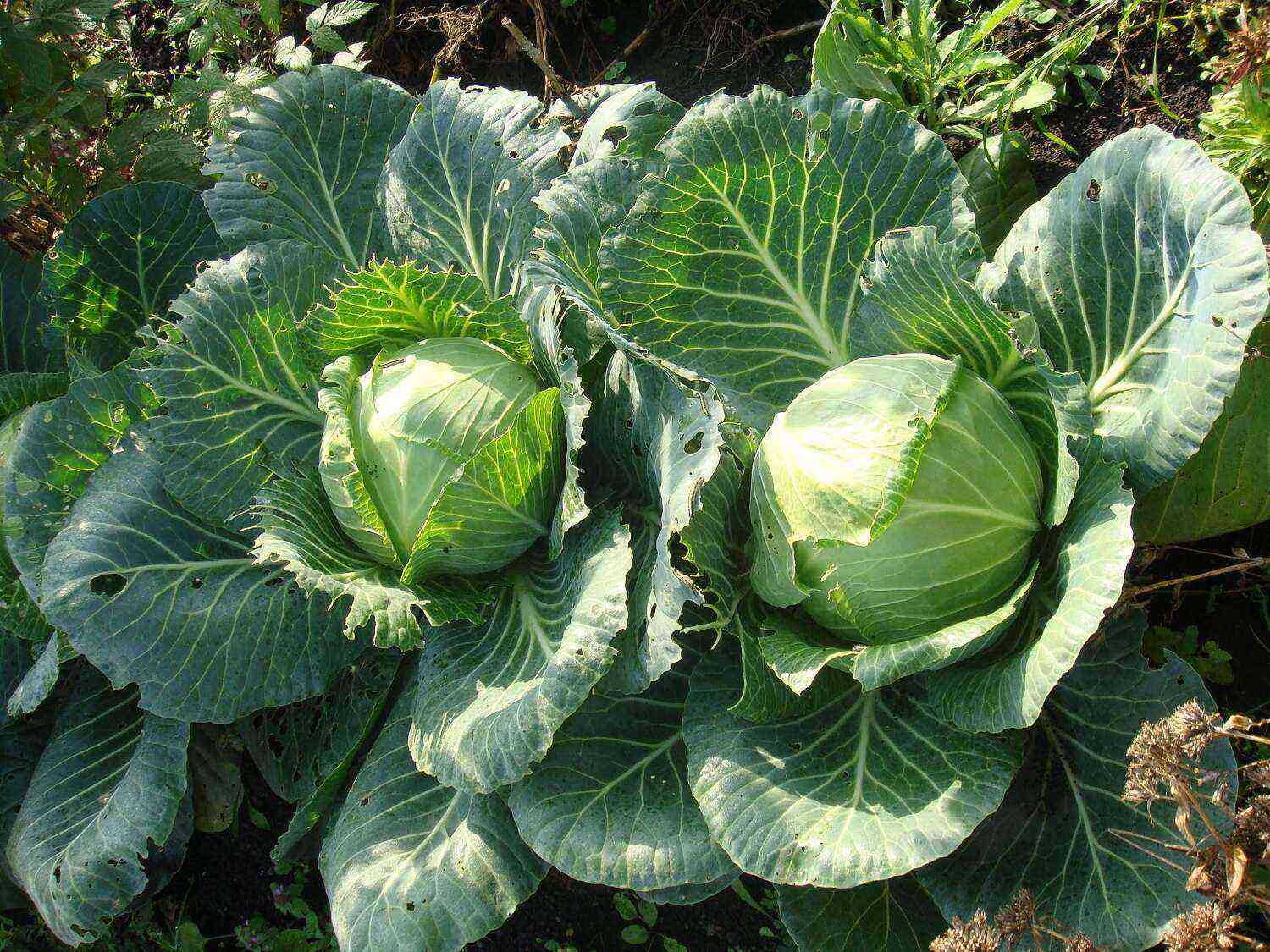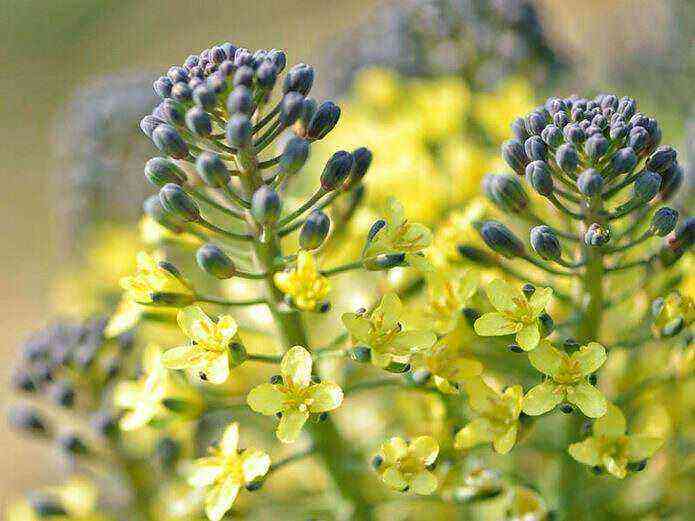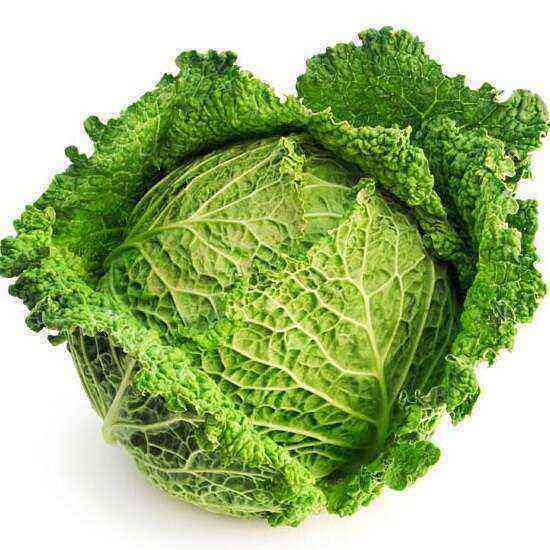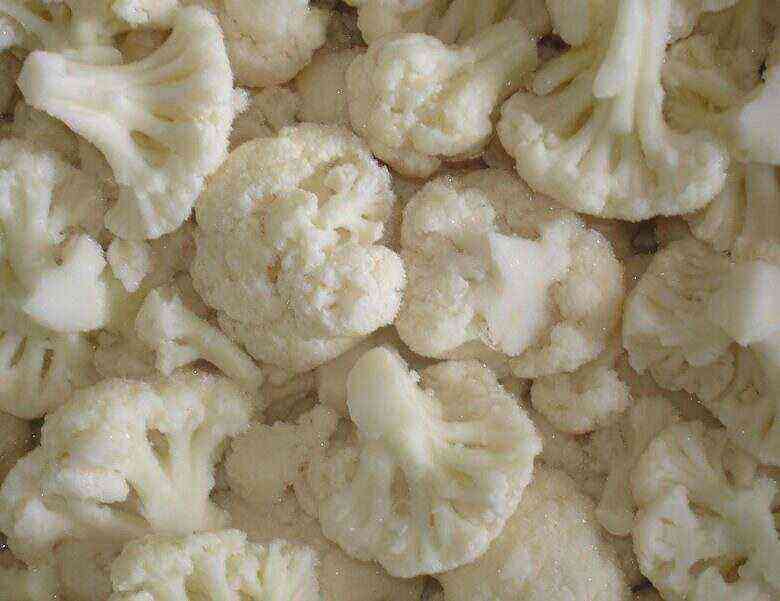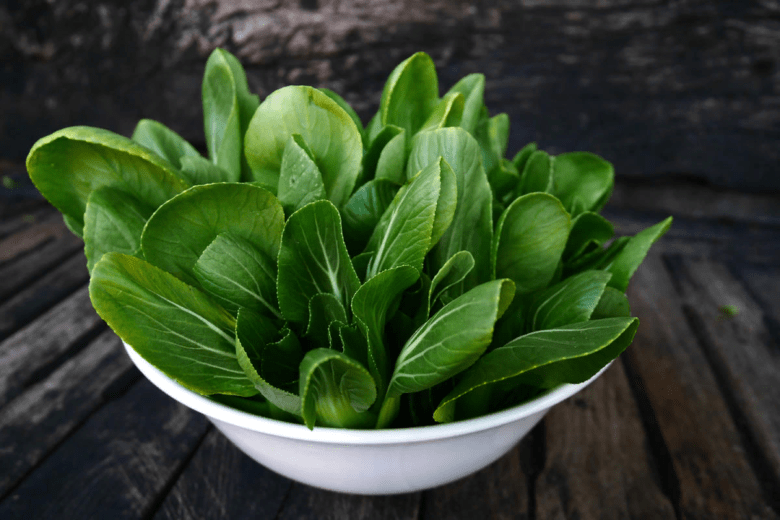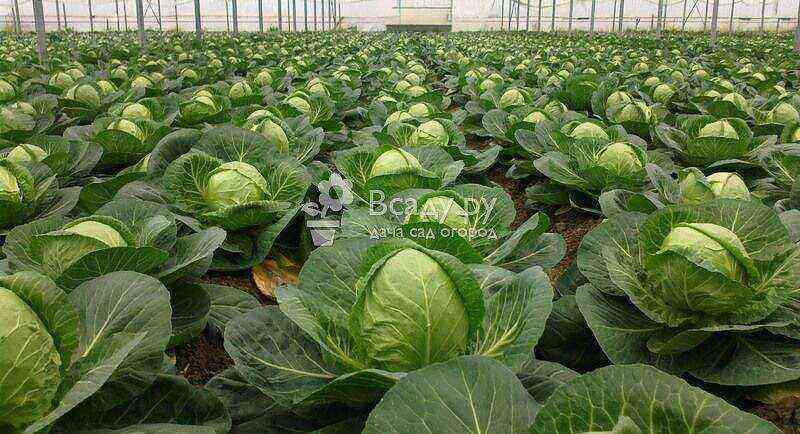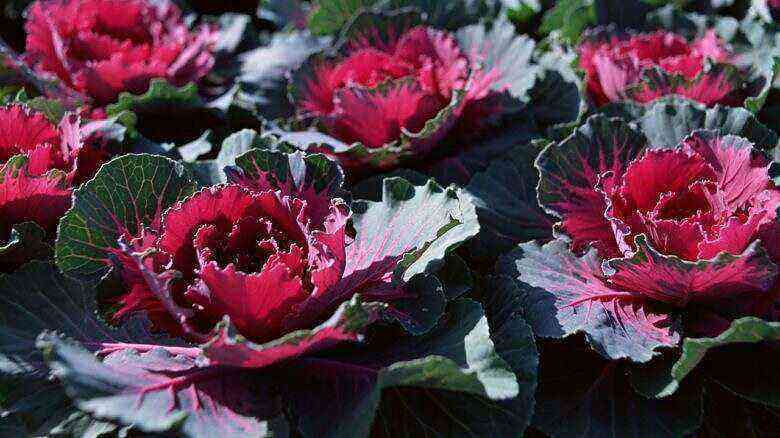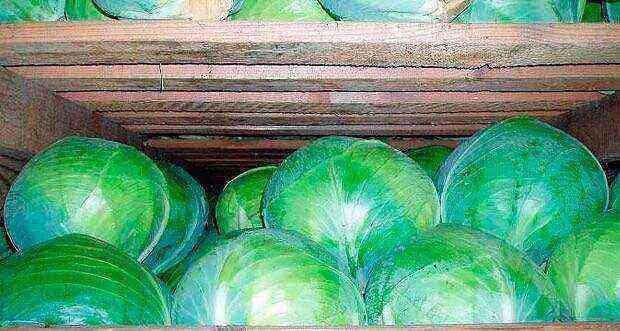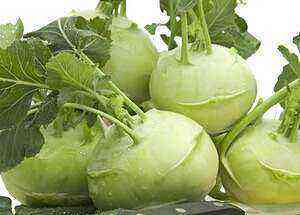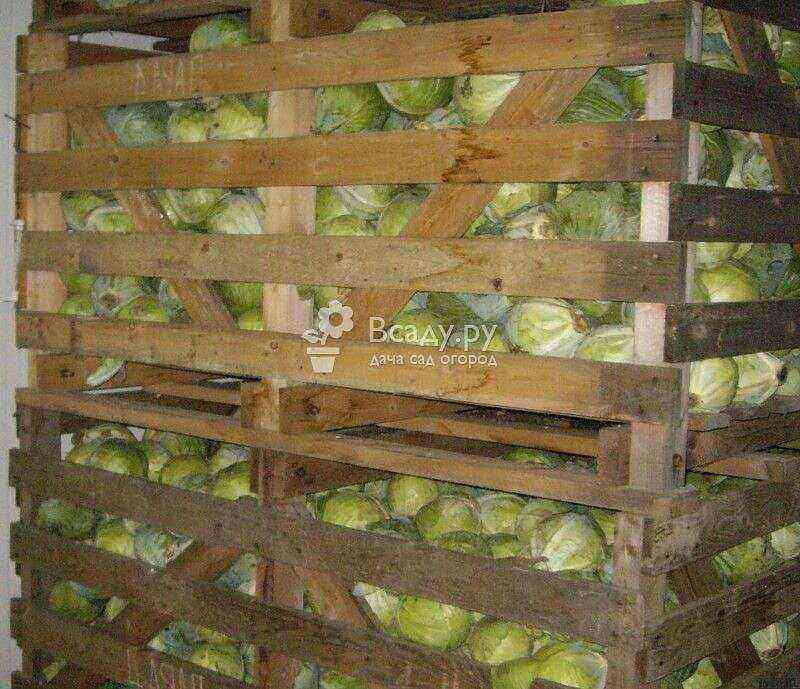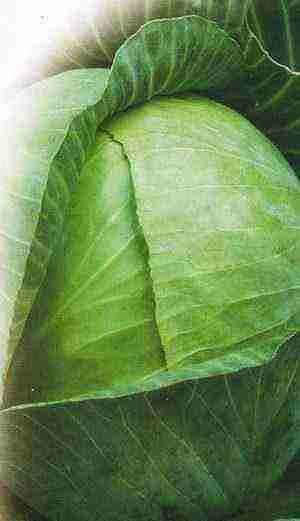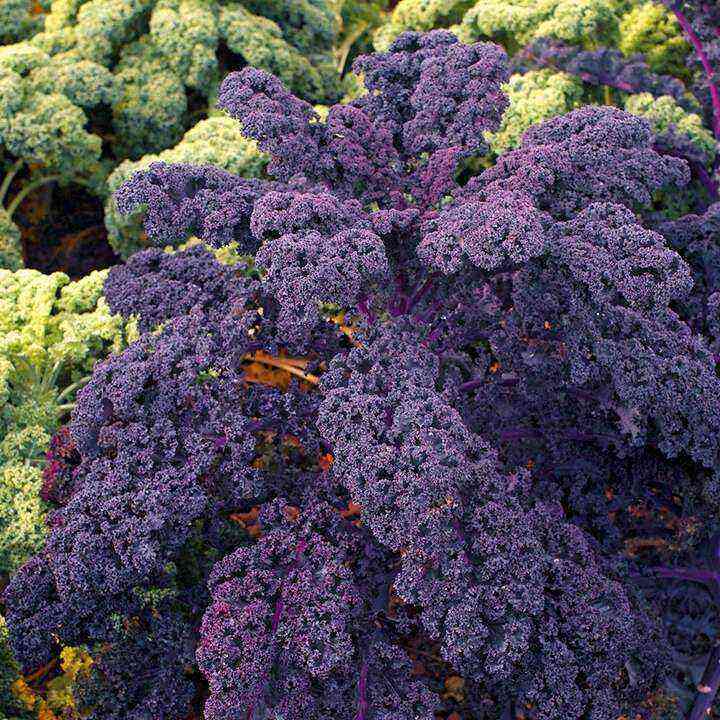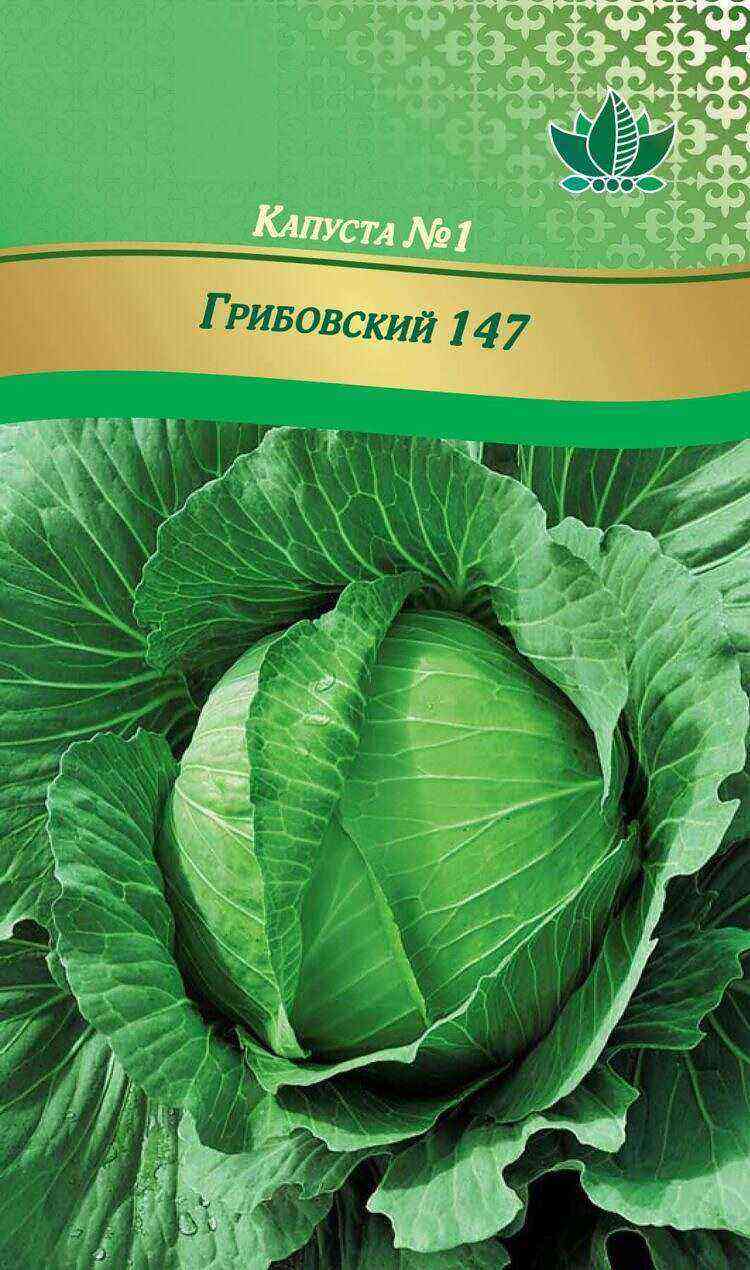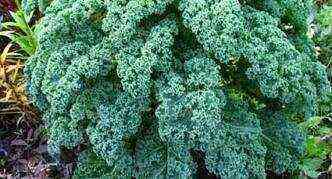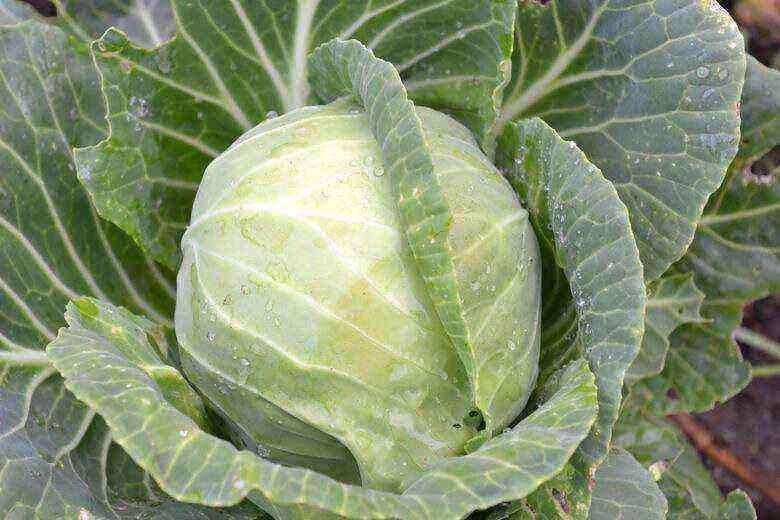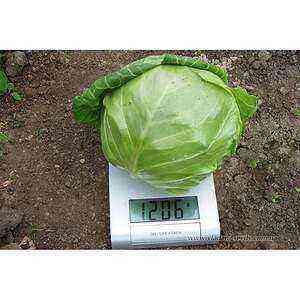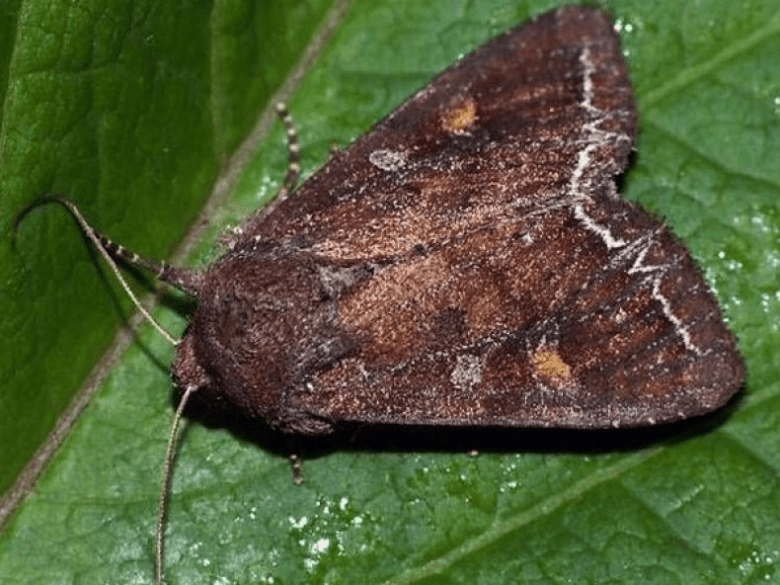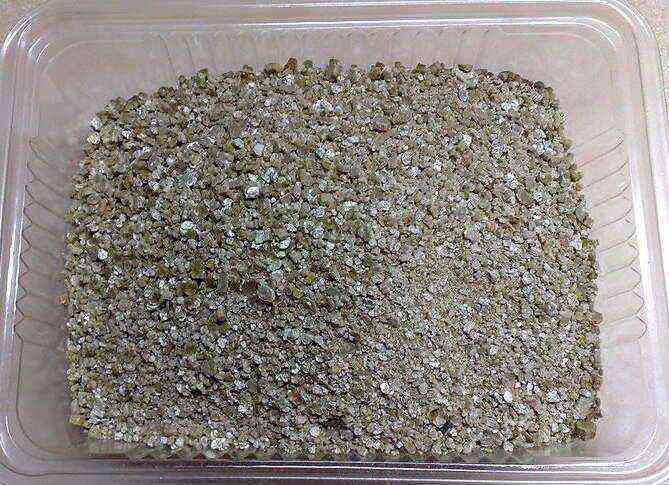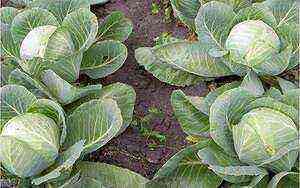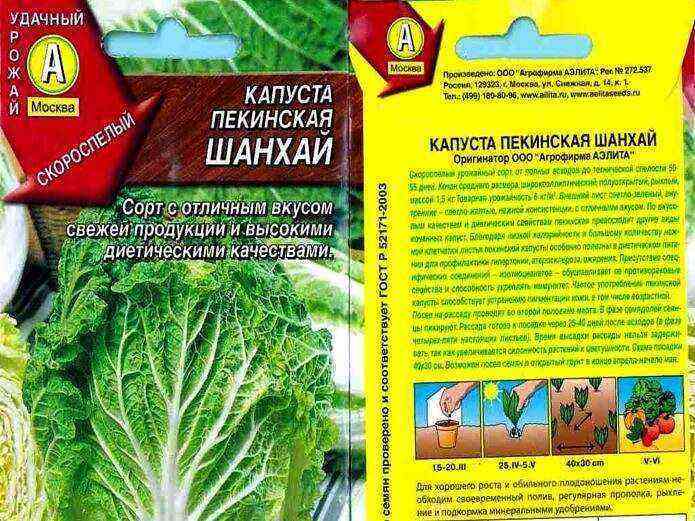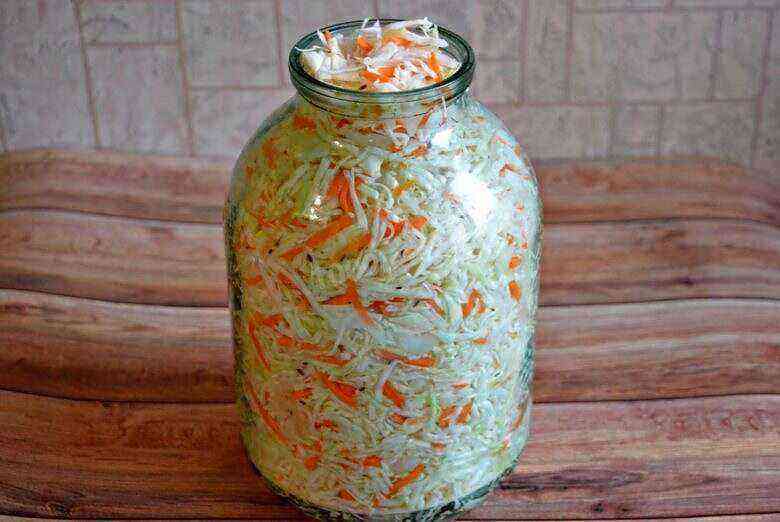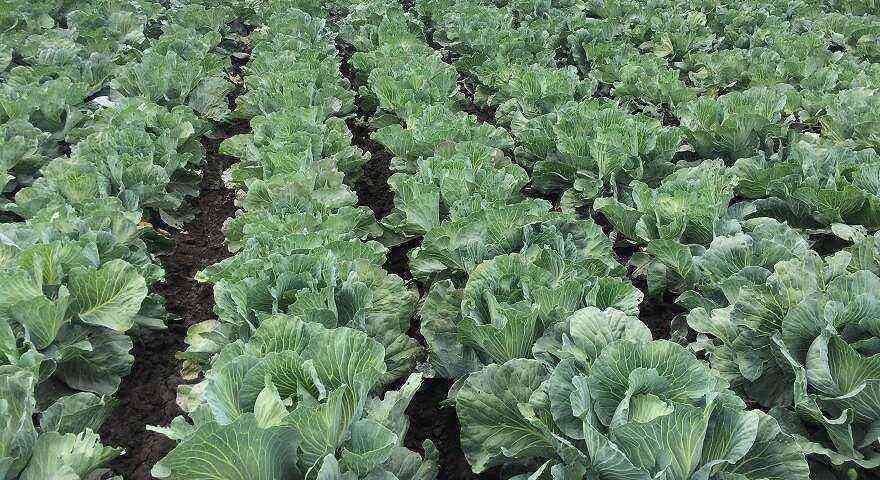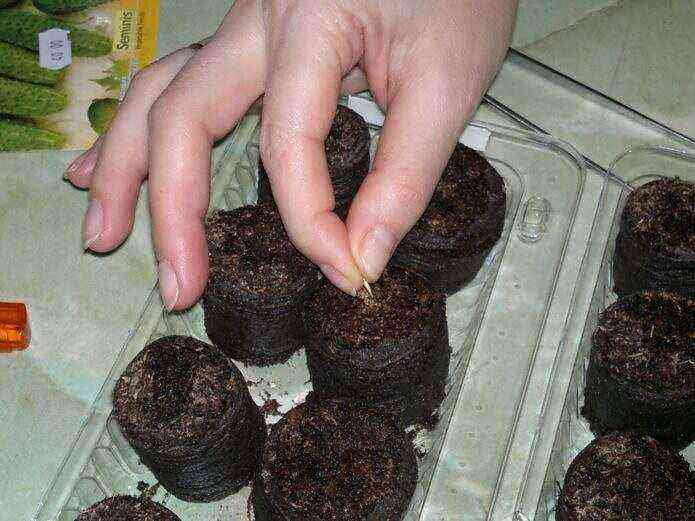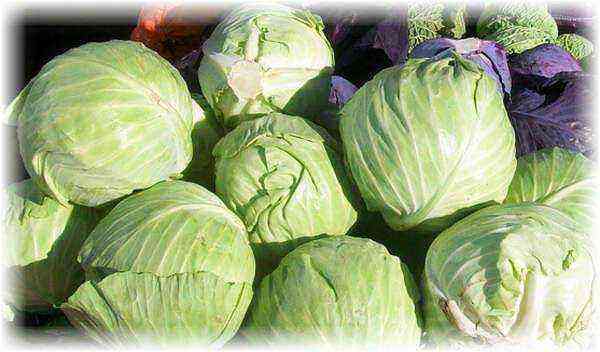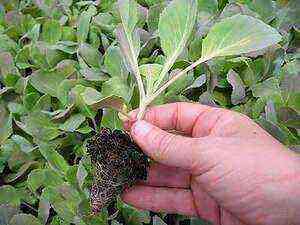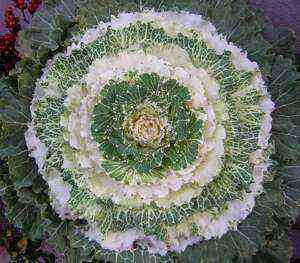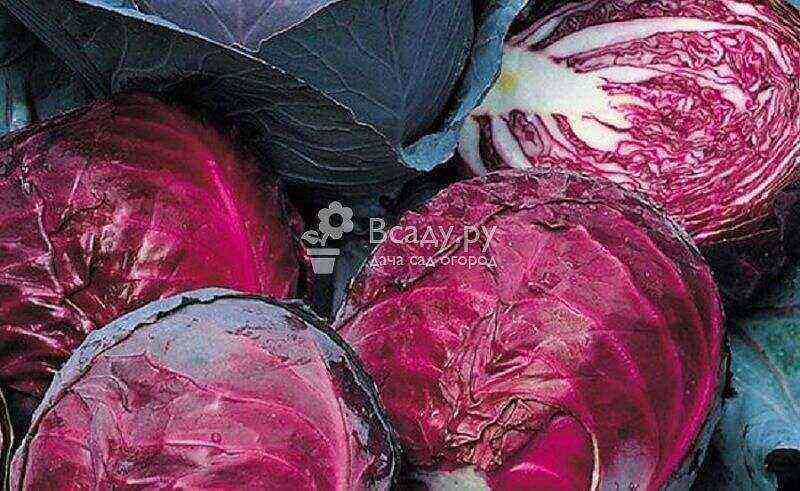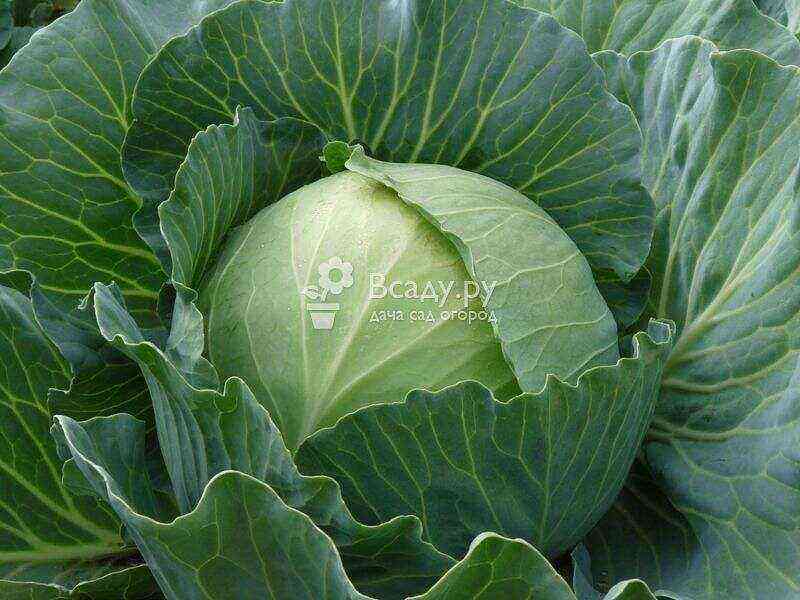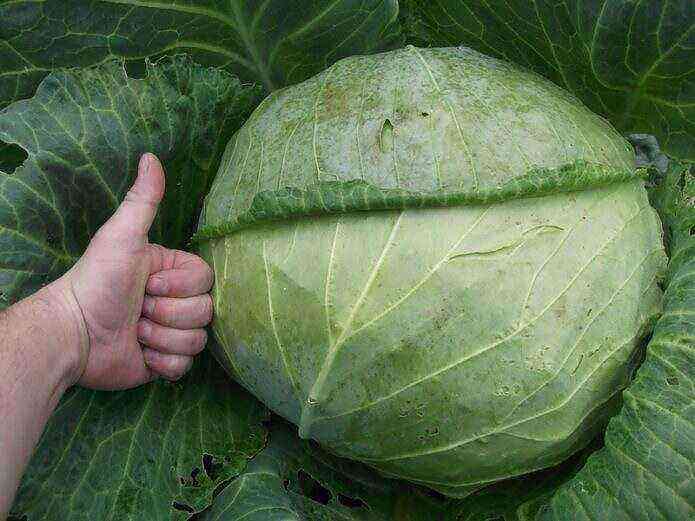White cabbage is grown in almost every household plot. Among the many varieties of vegetables, gardeners prefer the old proven variety – June. Early ripe cabbage grown through seedlings is ready for harvest in June, allowing you to diversify your summer menu.
Description and characteristics of the variety
June cabbage was bred by employees of the Federal Scientific Center for Vegetable Growing (Moscow region) by crossing the varieties Ditmarskaya early 2399 and Number one Gribovsky 147. It was admitted to experimental trials in 1967 and in 1971 was included in the State Register. Zoned throughout the country.
June cabbage – a variety of domestic selection, well-proven among farmers
The early maturing variety has a short growing season – 90–110 days. During this time, a rounded head of cabbage manages to form, the density of which is estimated at 4 points. A small fork weighing 0,9–2,4 kg has an internal stump of medium length. The outer color of the head is rich, light green, on the cut it is white-yellow. Small light green leaves, wavy at the edges, form a raised compact rosette 40-50 cm in diameter.
In June, small elastic heads of cabbage form weighing from a kilogram to two
The average yield is 363 c / ha, on fertile soil with regular maintenance, productivity increases significantly – up to 641 c / ha. The bulk of the crop ripens at the same time, the output of marketable products is 97%.
The bulk of the June cabbage variety ripens at the same time
Advantages:
- early ripening;
- resistance to cracking. Abundant watering does not harm it, but, on the contrary, increases the juiciness;
- frost resistance: seedlings do not die when the temperature drops to –2 ° C, adult plants are able to tolerate frosts down to –5 ° C. This allows the vegetable to be grown everywhere, even in risky farming areas with short and cool summers;
- immunity to cabbage fly, which causes great harm to cruciferous plants.
Early June cabbage can be grown in all regions of the country due to its cold resistance
Disadvantages:
- susceptible to keel, therefore, it is necessary to pay attention to the prevention of this dangerous disease;
- does not differ in keeping quality, which is typical for all early varieties.
June cabbage is recommended for fresh use – delicate thin leaves reveal their taste in salads and stews, but are not suitable for pickling. The product contains:
- dry matter in the amount of 8,1%,
- sugar – up to 3,8%,
- ascorbic acid – 45%.
Early June cabbage salad allows you to replenish vitamin deficiencies
Features of growing cabbage varieties June
Cabbage of this variety ripens quickly – it takes no more than 110 days from full-fledged shoots to ripening of forks. It is grown in seedlings.
Seeding dates for seedlings
Seedlings of early ripe June cabbage begin to grow at the end of winter. The specific sowing time is determined depending on the weather and climatic conditions of the region:
- in Central Russia, in the Moscow region, planting is carried out from the last days of February to the end of March;
- in the Urals and Siberia, cabbage is sown two weeks later, in the second decade of April;
- in the south of the country, where the earth warms up early and warm weather sets in in April, seedlings are distilled from mid-February.
Seedlings of early cabbage begin to grow in late February – early March
Seedling soil
Seedling soil should have a loose structure, good moisture and air permeability, with a neutral acidity level. For the soil mixture, take equal proportions of fertile soil, peat and sand. Too acidic soil provokes the development of keels, so ash (200 g / 5 l) or lime is added to alkalization. The prepared soil is disinfected with a saturated solution of manganese, Alirin-B (1 tablet / 5 l) or Fitosporin (5 drops / 5 l).
The seedling soil mixture should be loose and light.
Many gardeners prefer to purchase ready-made peat-based nutrient soil from stores and containing a full range of nutrients. It creates favorable comfortable conditions for the growth of plants, promotes their survival after planting and transplanting, provides resistance to stress and diseases, and increases their immunity.
Bio-soil contains all the components necessary for seedling
It is good to add coconut substrate diluted with water to the soil (2-3 liters per briquette). It contains phosphorus and potassium, which are necessary for the formation of strong viable seedlings. The introduced liquid fertilizers and groundbait in such a soil retain their useful properties longer, to which plants respond very well.
The porous structure of coconut fiber makes the soil air-and moisture-capacious, so that it always remains light, does not cake, does not crumple, and a hard crust does not form on its surface, which blocks the ingress of oxygen. As a result, a branched, strong root system is formed, which is necessary for the proper development of the plant.
Coconut substrate has a loose structure and is rich in phosphorus and potassium
Convenient to use are peat tablets, which are cylinders of dry peat, to which growth stimulants, mineral fertilizers, and antibacterial components are added. To grow seedlings, it is enough to fill the tablet with warm water, let it swell, and then insert the seed into a special recess in the end. Such soil reliably protects the roots from drying out and waterlogging, suppresses the development of harmful and promotes the development of beneficial soil microflora.
Peat tablets can be of different diameters, they are selected depending on the size of the root system of the planted plant
An ideal nutrient medium for plants is created in biocontainers – vermicompost granules. They contain beneficial microorganisms, humic substances, enzymes, vitamins and biologically active elements that suppress the pathogenic microflora. Thanks to biohumus, a friendly germination is noted, root formation is stimulated.
Biocontainers in the form of granules – a novelty for farmers
Selection of capacity
Seedlings of early cabbage can be grown in common boxes with subsequent picking or in separate containers – in this case, when 2-3 pairs of true leaves are opened, the seedlings are immediately planted on the site.
Cabbage seedlings from a common container will need to be cut open
The containers should have drainage holes and a tray onto which excess moisture will drain. Under the nursery, large containers or cassettes with small cells with a volume of 50 ml are used. Seedlings, after the appearance of 2 true leaves, must be transplanted into larger cells or into individual containers.
To avoid injuring the sprouts when picking, it is better to grow seedlings in separate cups, peat pots, containers with large cells with a volume of 80 ml, seedling rolls.
It is convenient to grow seedlings in peat pots – you do not need to dive, but transplant it into the ground together with a container that decomposes in the ground
Presowing seed preparation
Many manufacturers offer buyers pelleted seeds, which are sown immediately in dry form. They are enclosed in a shell with protective and stimulating substances, so they do not need additional processing. The dragees are larger than ordinary seeds, but remain viable for only 24 months.
Pelleted cabbage seeds have a protective shell and do not require additional pre-sowing treatment
The germination period of non-encrusted seeds is longer – 5 years. But such seeds need pre-sowing preparation, which is carried out in the following sequence:
- First, they are calibrated by immersing them in a 3% salt solution for 3 minutes and selecting larger ones.
- Small seeds that have floated to the surface are discarded, and those that have settled to the bottom are washed with water to remove salt and dried.
- Then it is disinfected for 15 minutes in a solution of boric acid (1 ml per 1 l) and copper sulfate (0,5 g / 5 l) or in a 1% solution of potassium permanganate.
- After this treatment, the seeds are washed with clean water and dipped in a solution with phytohormones for 2 hours (Epin, Zircon – 1 drop / 50 ml). Growth stimulants shorten the seed germination period and increase the intensity of seedling development.
Untreated seeds are etched in a XNUMX% solution of potassium permanganate
The next stage is the hardening of the seed, which is carried out in this way:
- First, the seeds are immersed in hot water (+15 ° C) for 50 minutes.
- Then they put it in a refrigerator with a temperature of 1–2 ° С for a day.
- After exposure to contrasting temperatures, the seeds are dried to a free-flowing state and sowing is carried out.
Seeding on seedlings
After preparing the seeds, sowing is carried out:
- In a common container filled with soil, seeds are placed in rows according to the 1 × 3 cm scheme, deepening the seeds by 1 cm. 2-3 seeds are placed in cups or peat pots; when sown in a snail, they are placed in the upper part of the roll with an interval of 10 cm.
- Sprinkled with a small layer of earth, moisten from a spray bottle and cover with a film. In greenhouse conditions at a temperature of + 20-25 ° C, sprouts appear already on the 4th-5th day.
- Dense crops in seedling boxes are thinned out, increasing the feeding area to 20 mm, and weak seedlings are cut in pots, leaving one of the strongest.
Cabbage seeds are sown in cassettes, buried in the substrate by 1 cm
Experienced summer residents never use all the seeds from the bag at once, but re-sow every 3-4 days. This allows you to replace seedlings that have not taken root in the garden with stronger plants and to extend the harvesting period.
To avoid stretching the seedlings, they are transferred for a week to a cooler, bright room (+12 ° C), regularly irrigating with warm water. For the entire remaining seedling period, plants must be provided with a long daylight hours, a comfortable temperature regime (+ 20-22 ° C), regular watering and good nutrition.
Video: some subtleties of sowing cabbage for seedlings
Seedling of seedlings
When growing cabbage in a nursery or in small cells, picking is necessary. With the appearance of the third leaf, the seedlings are seated in separate containers: after abundant watering, the cabbage is carefully removed from the box with a spatula, leaving the earth on the roots, and transplanted into pots, deepening to the cotyledon leaves.
After the appearance of the third true leaf, cabbage seedlings dive into separate pots
High-grade food
In the process of growing cabbage seedlings, regular feeding is carried out:
- After the appearance of the first true leaf, a complex mineral fertilizer Agricola is introduced into the soil (1 tablespoon per 5 l of water), which contributes to the intensive development of plants and the accumulation of vitamin C – this improves the taste and increases the usefulness of vegetables.
- A week later, they are fed with a nitrogen composition – mullein (1:10) or ammonium nitrate (30 g / 10 l) to build up the green mass.
- Before planting on a garden bed, cabbage is fertilized with Effekton, a natural substrate based on compost manure and peat with the addition of active ingredients. Organic fertilization improves the quality of the soil, increases its water permeability and enhances gas exchange. For root feeding, a solution of 200 g / 10 l is used, for spraying – 15 g / 5 l.
Effecton repeats the composition of manure by 94% and includes all trace elements necessary for plants
Hardening cabbage
7 days before planting in the ground, the seedlings begin to accustom themselves to the conditions of unprotected ground. Plants are hardened gradually:
- First, the vents in the room are slightly opened.
- Then the seedlings are taken out on the veranda or in the greenhouse, every day increasing the time spent at a lower temperature.
- Then they take it out into the garden and leave it under the open sky overnight.
Hardened cabbage seedlings are not afraid of recurrent frosts, and lowering the temperature to –3 ° C will not harm it. However, delicate seedlings that have not been hardened can die even from small nighttime cold snaps.
Before planting in the ground, cabbage seedlings are taken out to a greenhouse for hardening
Growing seedlings in an outdoor greenhouse
If the apartment does not have the conditions for distilling seedlings, you can grow them in a vegetable garden under a film shelter or in an unheated greenhouse. The garden bed should be prepared in autumn, filled with humus and mineral fertilizers. Sowing is carried out in the first decade of April:
- The soil is spilled with a hot solution of manganese and seeds are laid out in the grooves at a distance of 3 cm from each other.
Cabbage seeds on a heated bed are laid out in grooves every 3 cm
- Sprinkle with earth, compact and cover with a film.
- Arcs are installed above the bed and a non-woven material is pulled over them. Seedlings will appear in 2-3 weeks.
- During the day, in warm weather, the greenhouse is opened slightly to ventilate the seedlings, and they are covered again at night.
Seedlings of early cabbage can be grown not only on a windowsill, but also in an outdoor greenhouse
- Tightly planted seedlings are thinned out, and with the appearance of 3 pairs of true leaves, they are transplanted to a permanent place.
Landing in the ground
The seedling period ends 45-50 days after sowing. Seedlings grown up to 10-12 cm in height with 5-6 true leaves are planted in the ground. If the spring is long and cold not only at night, but also during the day, it is better to postpone the transplant until it warms.
Seedlings of cabbage before planting in the ground should have a strong stem and 2-3 pairs of true leaves
In the central regions, disembarkation is carried out from April 20 to mid-May, when the air warms up to +15 ° C during the daytime. In the northern regions, seedlings are transplanted to the site in late May – early June, in the south of the country – much earlier, in early April.
Site Preparation
Cabbage should be grown in well-lit areas – in the shade, the leaves become smaller, the forks are looser, smaller in size. The culture grows well on fertile sandy loam soil or loam with a low level of acidity. To create an optimal reaction of the soil environment, liming is carried out.
The place for growing cabbage is chosen sunny, away from tall trees.
The acidity of the soil is easy to determine by the weeds in the garden. Mother-and-stepmother, clover, field bindweed, quinoa grow in areas with a neutral reaction. Plantain, horsetail, sorrel and mint grow rapidly on acidic soils.
Best precursors to cabbage:
- bow,
- carrot,
- potatoes,
- zucchini,
- pumpkin,
- peas,
- beans.
It can be returned to its place after crucifers no earlier than after 5 years – this is how much the keel mushroom spores that are in the ground retain their viability.
The plot for sowing cabbage should be prepared in the fall, filled with fertilizers, and in the spring, loosen the ground and outline the grooves
Landing scheme
When planting seedlings of early ripe cabbage in open ground, they adhere to the 45 × 60 cm scheme. If the planting is too dense, you can end up with overgrown foliage, the heads will be small or not formed at all. Sowing begins with loosening the beds.
- Loose soil is filled with humus (10 l / m2) and superphosphate (100 g / m2).
- Rows are marked, 100 g of vermicompost is added to each hole, mixed with the ground, and thoroughly watered.
- The seedling is carefully removed from the seedling container and, together with a clod of earth, is lowered into the hole.
- Sprinkle, seal and cover with a film or stretch a non-woven material over the bed over the arcs.
Early cabbage is planted on the site according to the scheme 45 × 60
At first, young sprouts must be protected from cold winds, night frosts and direct sunlight. After a few days, the rejected seedlings are removed, and new seedlings are planted in its place.
Video: planting cabbage seedlings in the ground
Early white cabbage can be used not only in cooking, but also in landscape design. The decoration of the site will be a spicy vegetable bed with curly parsley leaves, light green cabbage heads, fragrant basil of various shades.
A spicy vegetable bed with cabbage, parsley and basil will become a real garden decoration
How to care for June cabbage in the open field
The future harvest depends not only on the quality of the seedlings – it is very important to create comfortable conditions for the plants:
- moisturize,
- feed
- process from pests.
Compliance with the water regime and soil cultivation
Cabbage is a moisture-loving culture. Since powerful leaves evaporate a lot of moisture, and a small root system cannot cope with the task of replenishing it in the required amount, you cannot do without regular watering. Compliance with the water regime contributes to the intensive growth of succulent leaves and the formation of a dense head of cabbage. Even a slight drying out of the earthen coma leads to the stiffening of the stump, and the cabbage head will not be poured at all. The soil should be saturated with moisture to a depth of 30–40 cm.
When sprinkling, not only cabbage leaves and soil are well irrigated, but also the humidity of the air increases
The established seedlings on the third day after planting in the garden begin to moisten 3 times a week at the rate of 8 liters of water per 1 m2… After a two-week adaptation, cabbage is watered less often – once every 7 days, but at the same time increasing the water consumption to 12 liters per 1 m2. On dry days, it is recommended to spray the leaves from a watering can or a hose with a spray, but not during the sun, but in the evening. With prolonged rains, watering is not carried out – the plants have enough natural precipitation. In addition, waterlogging often leads to the development of late blight of the roots. Watering is stopped 2 weeks before harvesting.
Young cabbage is irrigated in a garden bed from a watering can, bringing water under the root
There are different ways to moisturize cabbage:
- The most common irrigation method among summer residents is along grooves 10 cm deep, made in the aisles. Water is brought in from a bucket or hose, and after the moisture has been absorbed, the grooves must be sealed;
- for irrigation of young plants, water is recommended to be applied directly to the root zone. In this case, drip irrigation is more effective, in which water is supplied in small doses directly to the roots of plants through pipes laid along the cabbage rows. This irrigation option is quite expensive, but it saves water consumption and greatly facilitates the work of vegetable growers;
- the most optimal way of irrigation is sprinkling, in which not only leaves and soil are moistened, but also the air, which creates an optimal environment for plant development. Irrigation is carried out using rainfall installations or spray hoses.
The drip irrigation system for cabbage is fully automated and very convenient when growing cabbage in large areas
It is especially important to water the cabbage during the laying of the forks. However, at this time, in order to avoid cracking the heads, the sprinkling method is not used.
After watering or precipitation, shallow (7 cm) loosening is carried out, getting rid of the soil crust, which impairs aeration. 21 days after transplanting the cabbage to the site, it is necessary to huddle, the second hilling is carried out after 10 days. In dry, windless weather, the ground within a radius of 15 cm is carefully scooped up to the cabbage, trying not to damage the roots, falling asleep to the first leaves. Hilling contributes to the formation of a more developed, strong root system.
Twice during the growing season, cabbage is huddled, covering it with earth to the first leaves
Top dressing of cabbage
At different stages of development, cabbage needs various trace elements:
- at the beginning of the season, when the greens begin to grow actively, they need nitrogen;
- during the formation of a head of cabbage, the need for phosphorus and potassium increases, which make it easier to endure unfavorable weather, increase disease resistance and improve the taste of cabbage.
By carefully examining the cabbage beds, summer residents with experience in changes in the appearance of plants can determine which trace elements they lack:
- with a lack of potassium, light spots appear at the edges of the leaves, and small forks form;
- phosphorus deficiency is manifested by weak plant growth, dull foliage with a violet tint and late setting of heads;
- a sign of a lack of nitrogen is thin, weakened shoots at the initial stage of development, a change in the color of the leaves of the lower layer to yellow-green and their drying out.
Phosphorus deficiency in white cabbage is manifested by a change in the color of the leaves – they acquire a purple hue
Early cabbage is fed twice:
- 2 weeks after planting, watering is combined with the introduction of nitrogen fertilizers: urea (30 g / 10 l), mullein (1 glass / 10 l).
- When forming heads of cabbage, Nitroammofoska (30 g / m2), wood ash (500 g / m2).
Liquid mullein saturates the cabbage with nitrogen, which is necessary for the intensive growth of the leaf apparatus
An excellent organic nutrient for cabbage is liquid yeast, which is rich in proteins, amino acids, microelements. The solution is prepared from 100 g of yeast, 30 g of sugar and 10 liters of water. The mixture is placed in a warm place, after 3 days, the yeast starter culture is diluted with water 1:10 and three times with an interval of 10 days is added to the cabbage bed. However, such fertilization is effective only in dry warm weather with a temperature of at least +20 ° C.
Many summer residents use infusion of nettle, woodlice, dandelion for feeding cabbage:
- The chopped grass is placed in a barrel, filled with water, covered with a lid and left for 5 days.
- Then filter the liquid and dilute 1:10 with water before adding it to the bed.
This infusion can be fed to cabbage every 2 weeks.
A nutritious cabbage feed can be made with nettles
Protection against diseases and pests
June cabbage is rarely attacked by the cabbage fly, but aphids and cabbage caterpillars cause great harm to it, and unfavorable weather factors can cause the development of dangerous diseases.
Table: possible diseases of cabbage
Name of the disease
Symptoms
preventive measures
Treatment
Black leg The stem of the seedling at the base turns black and begins to rot. The plant stops developing and dies. A very dangerous disease that can destroy all seedlings
- do not thicken crops;
- regulate watering and do not use cold water;
- in the phase of 2 leaves, treat the soil and seedlings with a 0,2% solution of Fitosporin
- it will not be possible to save diseased seedlings – they will have to be thrown away;
- transplant healthy seedlings into a new substrate;
- spray with a 1% solution of Bordeaux mixture
Keela Growths appear on the roots that do not allow the small roots to develop. As a result, the seedlings grow poorly, do not take root well in the open field, the leaves of the lower row gradually dry out
- follow the rules of crop rotation;
- Carry out pre-sowing disinfection of soil and seeds
- destroy diseased plants;
- spray the soil and healthy cabbage with a 1% solution of Bordeaux mixture, Homa solution (40 g / 10 l), Tiovit Jeta (50 g / 10 l); re-process after 10 days
Downy mildew The disease often affects young plants, especially under a film cover. The upper part of the leaf plate is covered with yellowish spots, a gray plaque forms on the lower side. Sick leaves are deformed and die off
- the fungus remains on the seed, therefore, it is necessary to disinfect it before using it in a solution of Immunocytophyte (2 tablets per 30 ml of water);
- avoid stagnant water in the soil
- sprinkle the plants and soil in the root zone with ash;
- spray with Fitosporin solution (7 g / 3 l) twice with an interval of 5 days
Photo gallery: common cabbage diseases
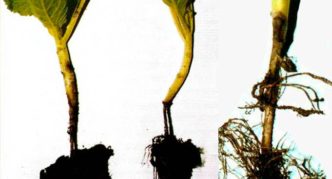
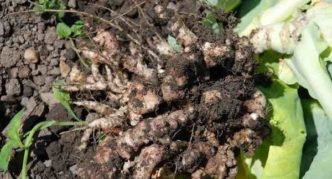
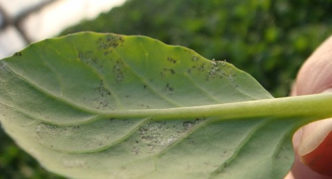
Small plantings next to the vegetable bed of watercress help me to prevent the appearance of pests on cabbage – the cruciferous flea is very fond of it. I treat accumulations of parasites on greenery in the evening with Confidor’s solution (1 granule per 10 liters). As a result, I did not notice a single flea on the cabbage leaves, but the salad, alas, is already unusable.
Planting watercress, which insects really like, will help save cabbage from flea infestations
Table: the main pests of cabbage
vermin
Manifestations
Prevention
Measures
Aphids Insects multiply en masse in dry summers, completely covering cabbage leaves. Sucking out the nutrient fluid, they weaken the plants, lead to discoloration and curling of the leaf plates. Aphids are also a carrier of disease-causing viruses.
- clean the area from plant residues in the fall;
- dig the ground;
- scare off parasites by spraying with herbal infusions (yarrow, chamomile, nettle, wormwood – 200 g / 10 l) or with an ash solution (300 g / 10 l) with the addition of soap (400 g)
Treat with solutions of Commander (5 ml 10 l), Intavir (1 tablet 10 l), Actellik (20 ml 10 l). Cruciferous flea Small insects, feeding on the pulp of green leaves of young plants, gnaw small holes, as a result the leaves dry out. Hot, dry weather contributes to the increase in the number of parasites. Gluttonous fleas can destroy all seedlings of planted seedlings in large areas, because they are able to eat a volume three times their weight
- moisten vegetable plantings by sprinkling;
- dust the plants with ash
- treat with garlic infusion (300 g / 10 l) with the addition of 100 g of soap;
- sprinkle with solutions of 70% vinegar essence (1 tablespoon per 10 l of water), Karate (2 ml / 10 l), Actellika (20 ml / 10 l) three times with a weekly interval
Cabbage whitewash Young larvae scrape off the top layer of the leaf plate, while adults eat the edges of the leaves. Pests are very gluttonous and can even destroy the pulp of the head of cabbage. Leaf-gnawing pests significantly reduce the quality of the harvest – the leaves turn yellow, lose elasticity and dry out Inspect cabbage, remove eggs and caterpillars Treat with Fitoverm solutions (8 ml / 1 l), Intavira (1 tablet per 10 l), again after a week
Photo gallery: parasitic insects damaging cabbage
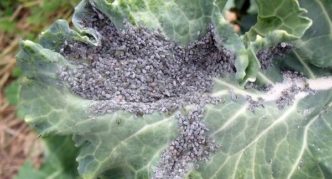
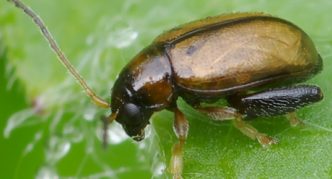

In general, caring for cabbage is easy if you follow agricultural techniques.
Video: tricks of growing cabbage
The best producers of June cabbage varieties
To grow strong seedlings, you need to purchase quality seed. Experienced gardeners, when buying seeds, first of all pay attention not to the colorfulness of the packaging, but to the manufacturer.
«Russian Garden»
The firm “Russkiy Ogorod” was founded in 1991, and in 1994 the packaging and delivery of the first colored bags with seeds to consumers began. A year later, its own seed production was created, and now this company occupies one of the first places among world producers. The agrofirm has a solid scientific base, including varietal selection, seed production, cleaning and sorting. In laboratories, seed material is thoroughly tested, and new varieties are tested on a pilot demonstration plot. The highest quality of the seed material is also evidenced by the fact that the seeds of the “Russian Ogorod” firm were delivered on board the Mir orbital station for space experiments.
Agrofirm “Russkiy Ogorod” sells only proven, strong and healthy planting material
“Prestige”
The company “Prestige” represents on the market seed material from the leading companies in Holland, Japan, Italy, as well as the achievements of Russian breeders. Agrofirm “Prestige” is really prestigious seeds, certified in Russia and adapted to our difficult climatic conditions.
The company “Prestige” supplies the market with really prestigious seeds of the best producers in the world
“Aelita”
Since 1994, the company “Aelita” has retained its leading position in the seed market. Being engaged in breeding work, she creates new varieties and improves the already loved ones, zoning them for all regions of the country. On a pilot site in the Nizhny Novgorod region in greenhouses and open ground, comprehensive tests of seed material are carried out. Therefore, it is no coincidence that farmers have associated the Aelita trademark with high quality products for more than two decades.
Buying cabbage seeds June trade mark “Aelita”, there is no doubt – the harvest will be rich
“Gavrish”
The seeds of the Gavrish trademark are very popular among gardeners. Founded back in 1993, the company over the years has turned into a large agro-industrial complex with 5 breeding centers in different climatic zones. The employees of the agricultural company are conducting serious research work in the field of biology of vegetable crops, optimization of the timing of growing plants and their resistance to unfavorable factors. Productivity, excellent taste and immunity to diseases are the main features that the breeders of the Gavrish company strive to implement in the varieties offered to vegetable growers in Russia and many countries of the world. During storage, the seeds are checked for germination and germination intensity, and before packing, they are cleaned, dried and sorted.
Agrofirm “Gavrish” (trade mark “Udachnye Seed”) cares about its reputation, there are never empty seeds in bags
“SeDec”
SeDec is the oldest domestic seed-growing company, established in 1995. The company has an excellent reputation, its high-quality seed material is well known to farmers in Russia and neighboring countries. On experimental sites in different regions of the country, its employees annually conduct variety trials, prepare and supply seeds of their own selection and new products from foreign partners to the market.
High-quality seed material of the domestic company “SeDec” is appreciated by both professionals and beginners in the garden business
“Seeds of Altai”
The company “Seeds of Altai” has been known to farmers for over 20 years. It supplies the best samples of seeds obtained in the conditions of Western Siberia, as well as novelties of Russian and foreign selection. All seeds are suitable for a harsh continental climate – after all, their production takes into account the lack of sunny days, and return frosts at the beginning of the season, and early autumn colds. The company offers its customers the seeds of only those plants that have time to ripen in the short Siberian summer.
The seeds of the agricultural company “Seeds of Altai” are adapted to the conditions of the harsh continental climate
“PLASMA”
The seeds of the PLAZMAS firm are in great demand among gardeners. The company is not engaged in breeding, its main activity is plasma processing of seed material. Under the influence of low-temperature plasma, biological processes are accelerated, productivity increases, and the quality of the crop improves. Conventional crops die in severe drought conditions, and those obtained from plasma seeds grow and quickly gain strength.
Firm “PLAZMAS” offers consumers high-quality seeds that have undergone plasma treatment
“Search”
The seeds of the Poisk trademark also have an excellent reputation. The agricultural holding, founded in 1990 on the basis of the All-Russian Research Institute of Vegetable Growing, has a powerful breeding base and constantly updates its product range. High quality seed material is ensured through the use of advanced technologies for growing and storage.
The Poisk brand is well known in the seed market since 1990
Video: June white cabbage (“Search”)
Reviews
Early ripe June cabbage attracts gardeners with its short growing season – already in June you can harvest fresh vegetables with a rich arsenal of nutrients and excellent taste. And thanks to its cold resistance, it is grown in all regions of the country, including Siberia and the Urals. Despite the appearance of many vegetable novelties, this variety continues to be one of the most beloved and sought-after varieties.
